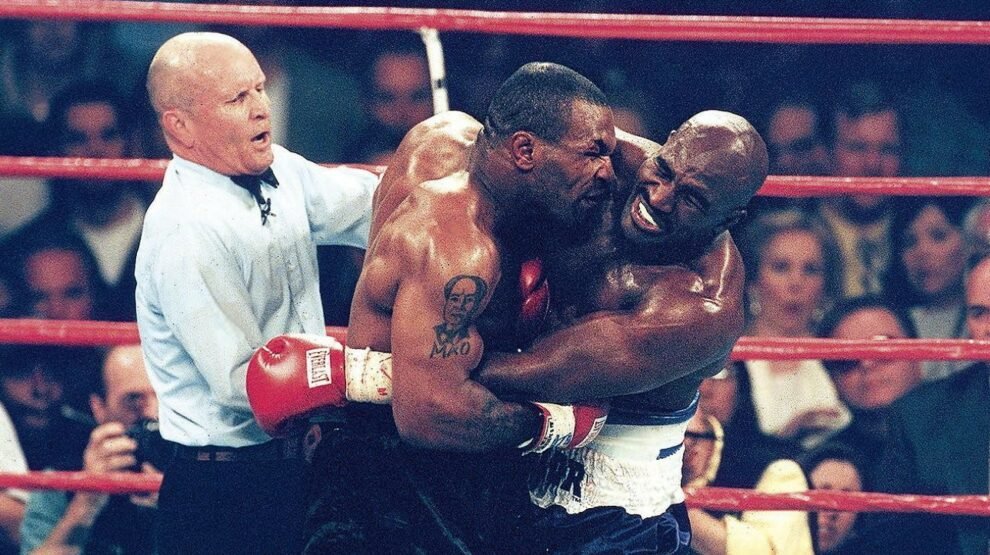Boxing has always been more than just a sport; it is a theater of human drama, where legends are born, rivalries ignite, and moments become etched in history. Few events in the annals of boxing encapsulate this duality as vividly as the infamous “Bite Fight” between Mike Tyson and Evander Holyfield on June 28, 1997. This was not merely a contest of fists—it was an intersection of raw power, unyielding resilience, and the frailties of human emotion. While the night ended with Tyson’s shocking disqualification for biting Holyfield’s ear, it also cemented Holyfield’s legacy as one of the most composed and dignified champions in the sport. Let us delve into the story behind this legendary yet tragic evening.
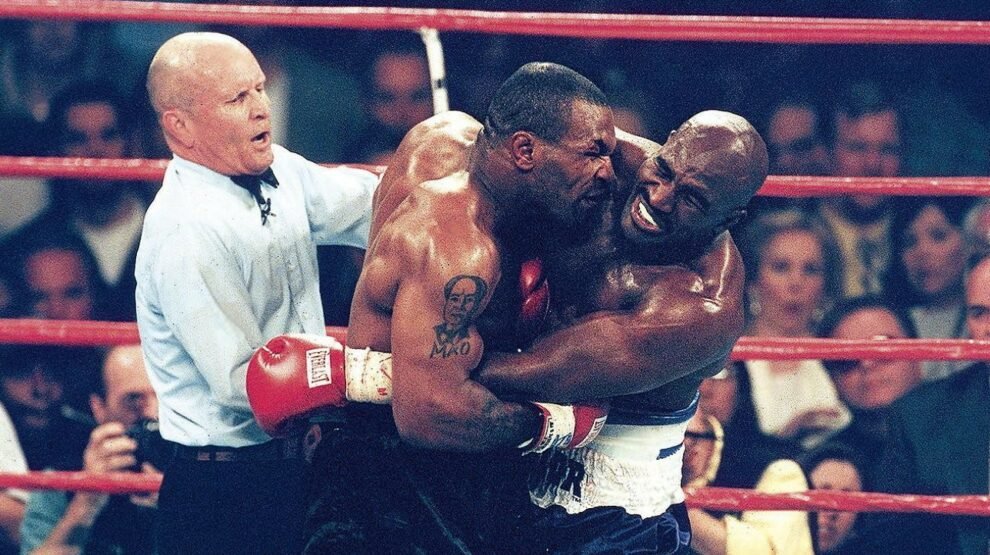
To understand the significance of the fight, we must first examine the context that led to it. By 1997, both Mike Tyson and Evander Holyfield were at pivotal points in their careers. Tyson, known as “Iron Mike,” had risen from poverty to become the youngest heavyweight champion in history. His ferocious punching power and intimidating presence made him a global icon. However, by the mid-1990s, Tyson’s life outside the ring began spiraling out of control due to legal troubles, financial mismanagement, and personal demons.
In contrast, Evander Holyfield, dubbed “The Real Deal,” represented everything Tyson lacked—discipline, humility, and unwavering faith. A former Olympic bronze medalist, Holyfield had transitioned seamlessly to professional boxing, earning respect for his technical prowess and granite chin. In November 1996, he shocked the world by defeating Tyson via an 11th-round knockout, claiming the WBA heavyweight title. It was a monumental upset that shattered Tyson’s aura of invincibility.
Naturally, a rematch was inevitable. Promoters saw dollar signs, fans clamored for redemption or revenge, and the fighters themselves harbored contrasting motivations. For Tyson, it was a chance to reclaim his throne and silence critics who doubted his dominance. For Holyfield, it was an opportunity to prove his victory was no fluke and further solidify his place among boxing immortals.
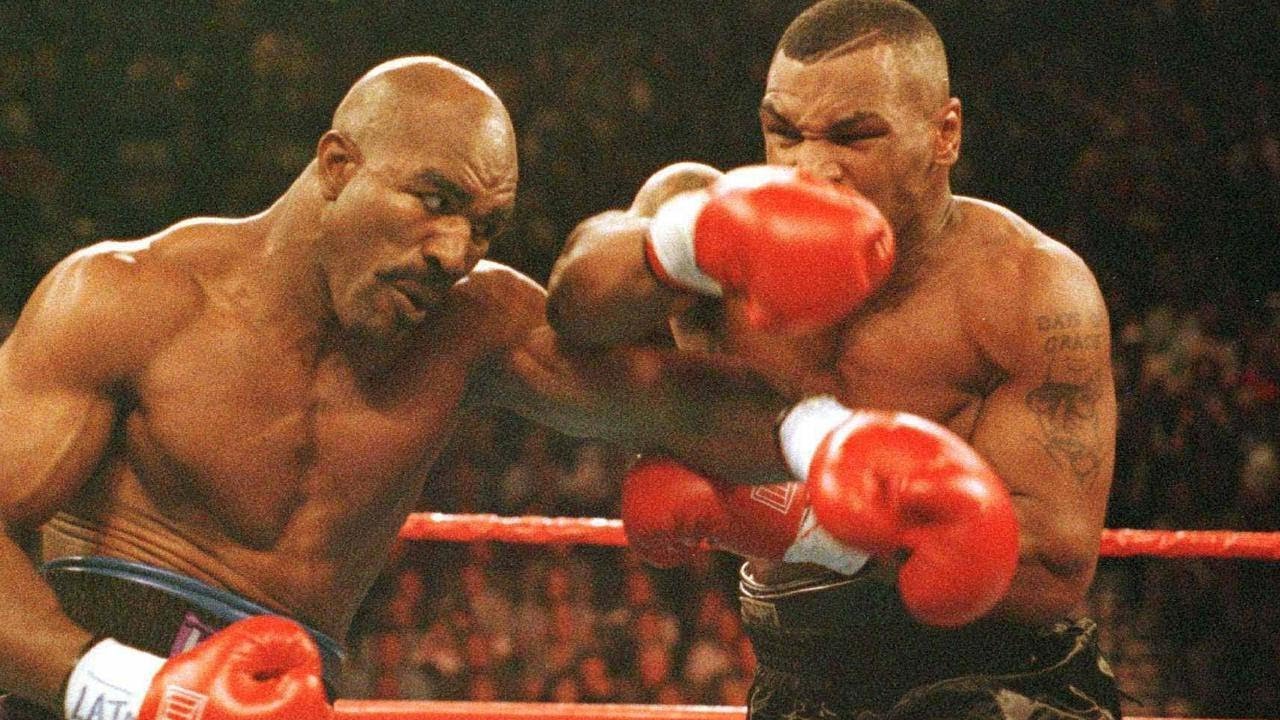
On the night of the rematch, the MGM Grand Garden Arena in Las Vegas buzzed with anticipation. Over 16,000 spectators packed the venue, while millions tuned in worldwide. The atmosphere crackled with tension, fueled by pre-fight antics and verbal jabs exchanged between the two camps. Tyson, visibly agitated during the weigh-in, accused Holyfield of headbutting intentionally—a claim he would later use to justify his actions inside the ring.
As the bell rang to start the bout, it became clear that this fight would be unlike any other. Holyfield immediately took control, employing his superior footwork and defensive skills to frustrate Tyson. Despite being outweighed and undersized, Holyfield absorbed Tyson’s punches with ease and countered effectively. By the second round, Holyfield landed several clean shots, opening cuts above Tyson’s eyes. Referee Mills Lane repeatedly warned Holyfield about accidental head clashes, but Tyson grew increasingly frustrated.
What followed was a descent into chaos that no one could have predicted.
By the third round, Tyson’s frustration reached its boiling point. Unable—or unwilling—to solve Holyfield’s tactics, Tyson resorted to desperation. Midway through the round, after another clash of heads left him bloodied, Tyson committed the unthinkable act: he bit down on Holyfield’s right ear, tearing off a chunk of flesh. The crowd gasped in disbelief as Holyfield recoiled in pain, clutching his wounded ear.
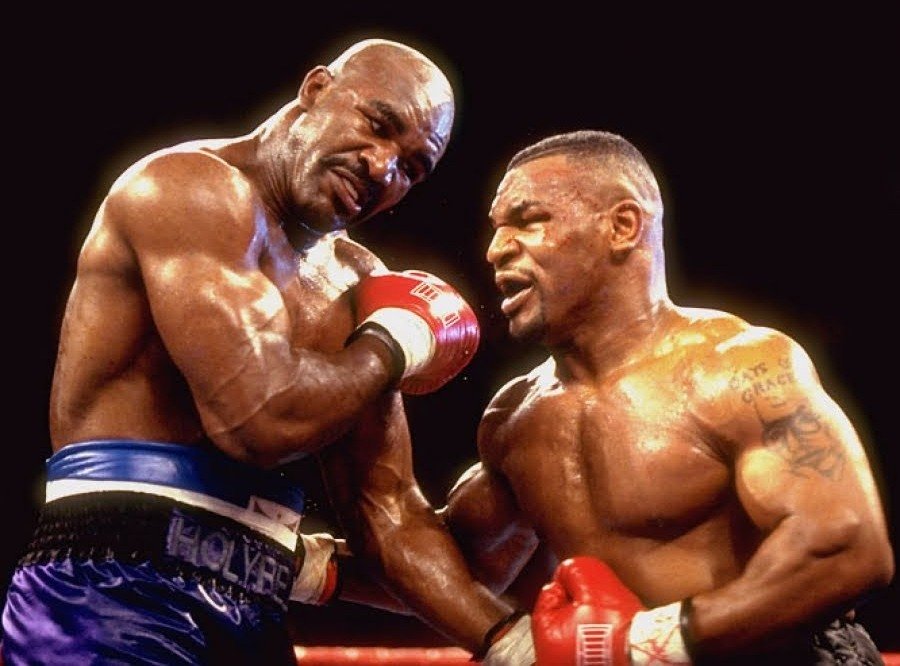
Referee Mills Lane initially missed the bite but quickly intervened upon realizing what had happened. After consulting with ringside officials, Lane deducted two points from Tyson. Remarkably, the fight resumed despite the grotesque injury inflicted on Holyfield. Minutes later, Tyson struck again, this time biting Holyfield’s left ear. The referee had seen enough and disqualified Tyson, handing Holyfield the win by default.
The arena erupted in pandemonium. Fans threw debris onto the ring, while security struggled to maintain order. What should have been a showcase of athletic excellence devolved into a spectacle of disgrace. Tyson’s actions not only tarnished his reputation but also overshadowed Holyfield’s remarkable performance.
While Tyson’s behavior dominated headlines in the aftermath, Holyfield’s response spoke volumes about his character. Instead of retaliating or lashing out, Holyfield maintained his composure throughout the ordeal. During post-fight interviews, he expressed disappointment but refrained from criticizing Tyson personally. He emphasized his faith and gratitude for emerging victorious under such bizarre circumstances.
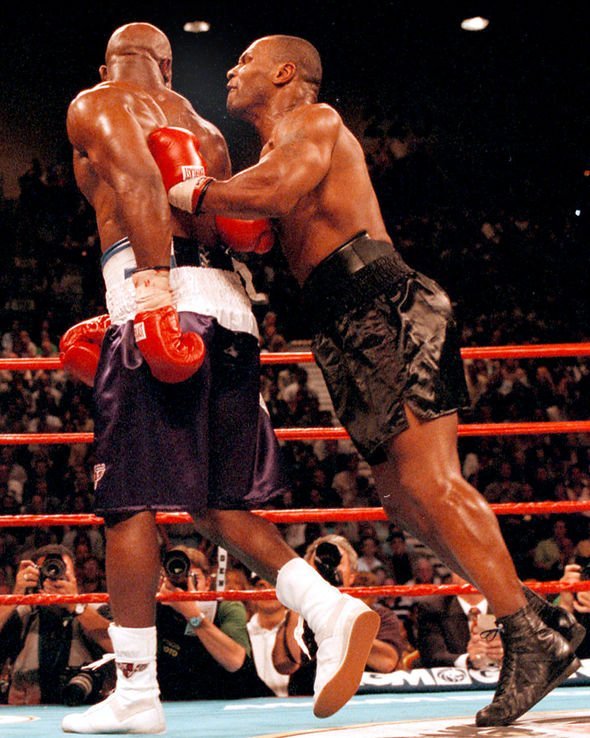
Holyfield’s grace under pressure served as a stark contrast to Tyson’s implosion. Where Tyson allowed anger and ego to consume him, Holyfield demonstrated poise and professionalism. These qualities endeared him even more to fans and solidified his status as a role model within the sport. Years later, Holyfield reflected on the incident with forgiveness, stating that everyone makes mistakes and deserves a second chance.
For Tyson, the consequences of his actions were severe. Boxing authorities fined him $3 million—the largest penalty ever imposed on a fighter—and suspended him for over a year. Sponsors distanced themselves, and public perception shifted dramatically. Once revered as a fearsome warrior, Tyson now faced ridicule and scorn. Many questioned whether he could ever redeem himself in the eyes of fans and critics alike.
Despite these setbacks, Tyson eventually returned to the ring, albeit without recapturing his former glory. His career trajectory serves as a cautionary tale about the dangers of unchecked emotions and the importance of mental health support for athletes. Today, Tyson has reinvented himself as a cultural figure, leveraging his past experiences to connect with audiences through documentaries, podcasts, and public speaking engagements.
More than two decades later, the Tyson-Holyfield rematch remains one of the most talked-about moments in sports history. It transcended boxing, becoming a symbol of how unchecked aggression can lead to self-destruction. At the same time, it highlighted the enduring values of discipline, perseverance, and dignity embodied by Holyfield.
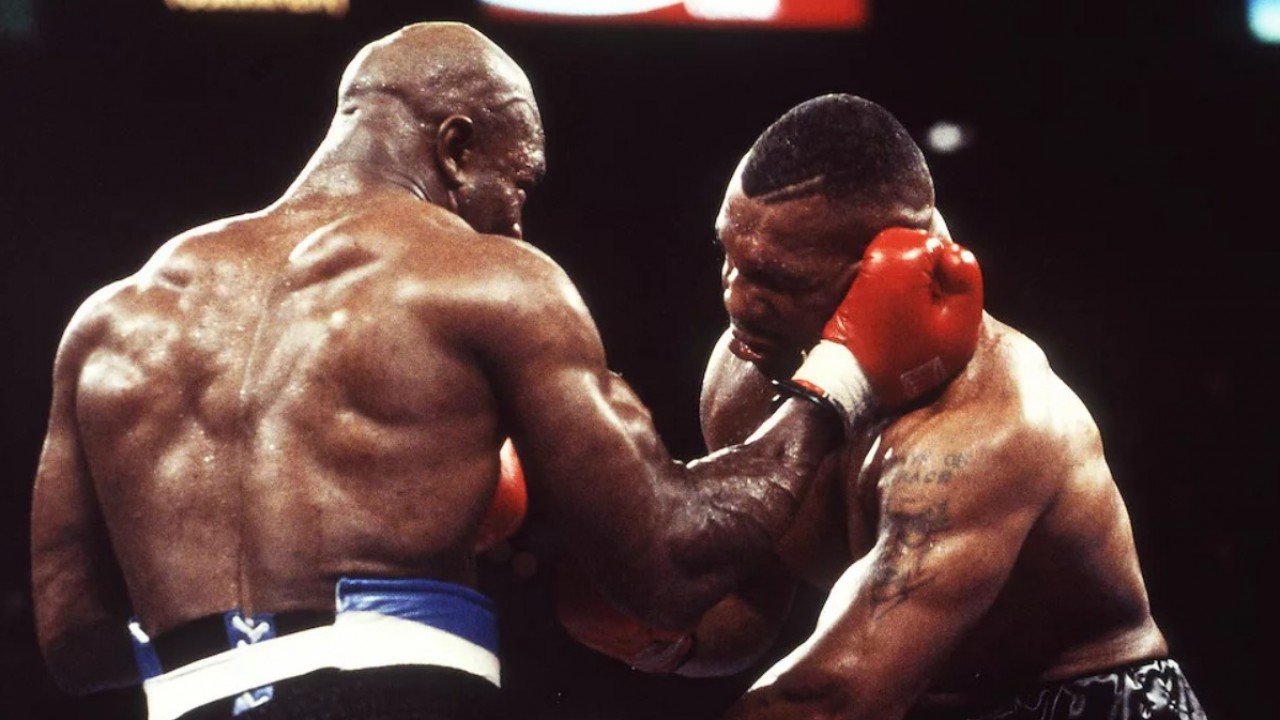
From a marketing perspective, the fight generated unprecedented interest in boxing. Pay-per-view numbers soared, merchandise flew off shelves, and discussions surrounding the event dominated media outlets for weeks. Even today, clips of the bite continue to circulate online, ensuring its place in pop culture lore.
However, beyond the spectacle lies a deeper lesson about humanity. The night of June 28, 1997, reminds us that greatness is not solely defined by physical prowess but also by how one handles adversity. Holyfield’s ability to rise above the chaos exemplifies true sportsmanship, while Tyson’s fall underscores the fragility of even the strongest among us.
The legend and tragedy of the Tyson-Holyfield rematch serve as a microcosm of life itself—a blend of triumph and failure, honor and disgrace. While Tyson’s bite will forever be remembered as one of the darkest moments in boxing history, it inadvertently illuminated Holyfield’s class and resilience. Together, they created a narrative that continues to captivate audiences and inspire reflection.
As we revisit this unforgettable chapter, let us celebrate not only the drama of the ring but also the timeless virtues it revealed. For every punch thrown and every bite taken, there exists an opportunity to learn, grow, and appreciate the complexities of the human spirit. And perhaps, therein lies the true essence of boxing—a mirror reflecting both our highest aspirations and our deepest flaws.
